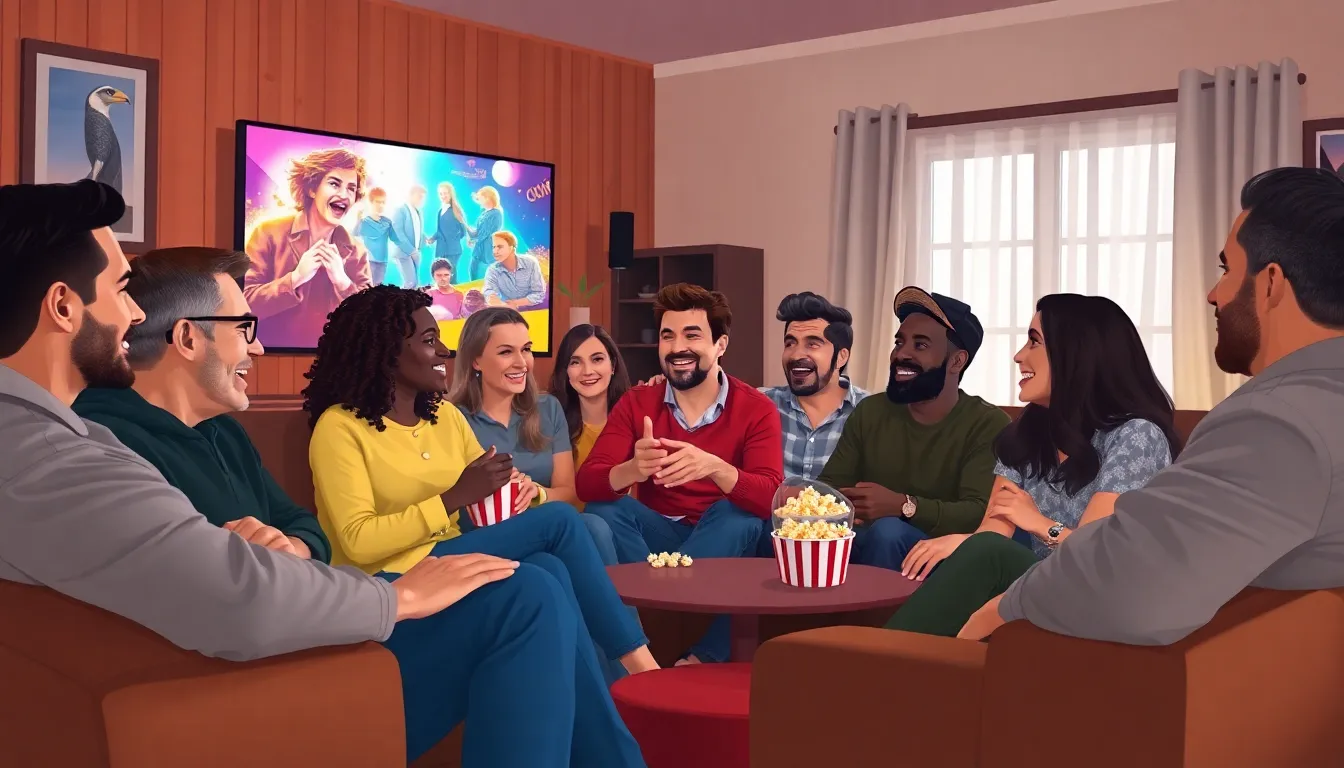In the world of binge-watching, subtitles can make or break the viewing experience. Netflix’s timed text style guides are the unsung heroes behind those captivating translations and witty captions that keep audiences glued to their screens. Ever wondered how those subtitles manage to convey the perfect punchline while fitting snugly into a scene? It’s like a well-choreographed dance, and Netflix has the moves down to a science.
Table of Contents
ToggleOverview of Netflix Timed Text Style Guides
Netflix’s timed text style guides dictate formatting and stylistic choices for subtitles and captions. These guides ensure consistency and clarity across all content. Each guide focuses on specific aspects such as font style, text placement, and timing for on-screen display.
Guides contain rules for readability, emphasizing factors like character limits, line breaks, and gauge of speech speed. They prioritize viewer comprehension, ensuring that subtitles do not overwhelm the visual experience. For instance, a maximum of 42 characters per line fosters clarity, especially during rapid dialogue exchanges.
Further, the guides outline standards for language use. They promote accurate translations, capturing the original intent and tone of dialogue. Nuanced regional phrases receive special treatment, allowing for cultural relevance. Content creators employ these guides to enhance the viewing experience through effective communication.
Styling also plays an important role. Color coding assists viewers in distinguishing between speakers, while italics convey off-screen dialogue or sound effects. These visual cues create a dynamic and immersive narrative experience.
In addition, timing guidelines recommend displaying text long enough for viewers to read comfortably. This approach considers the pace of speech and visual transitions in each scene. Contributors adjust timing based on the need for viewer retention and engagement.
Ultimately, Netflix’s timed text style guides shape every subtitle and caption presented to audiences. Consistency, readability, and accessibility characterize these guidelines, affirming Netflix’s commitment to quality. Engaging content paired with effective text elevates the overall viewing experience for all users.
Importance of Timed Text in Media

Timed text plays a central role in shaping the viewing experience on platforms like Netflix. Subtitles and captions enhance comprehension and engagement, ensuring that content resonates with diverse audiences.
Enhancing Viewer Experience
Subtitles create an immersive atmosphere by providing context to the visuals. Captions convey not just dialogue but also sound effects and music, enriching storytelling. Viewers understand cultural nuances better through accurate translations, making content relatable. Timed text guides keep pace with on-screen action, allowing seamless integration of text and visuals. Effective formatting ensures readability, enhancing overall satisfaction.
Accessibility Considerations
Accessibility is a crucial aspect of timed text integration in media. Subtitles empower viewers who are deaf or hard of hearing, offering a way to engage with dialogues and sound cues. Language learners benefit from subtitles as they improve vocabulary and listening skills. Timed text style guides include specifications that support various user needs, promoting inclusivity. They also ensure compliance with legal standards, addressing accessibility requirements for diverse audiences.
Key Elements of Netflix Timed Text Style Guides
Netflix’s timed text style guides define essential practices for subtitle and caption creation. These guidelines focus on enhancing viewer comprehension and engagement across diverse content.
Formatting Guidelines
Formatting rules establish clear visibility for subtitles and captions. Maximum character limits per line often range from 32 to 42 characters. Line breaks must occur naturally, ensuring readability without disrupting the flow of dialogue. Each screen display typically lasts between one to six seconds, allowing adequate time for viewers to read effortlessly. Consistent alignment with visual elements also enhances viewer experience, ensuring that text complements rather than distracts from the on-screen action.
Punctuation and Grammar Rules
Punctuation and grammar directly affect clarity in subtitles. Standard capitalization typically applies to the first word of each sentence. An ellipsis often indicates a pause, while commas assist in conveying natural speech patterns. Grammatical accuracy is essential; dialogues must reflect inherent language rules to maintain authenticity. Additionally, contractions like “don’t” instead of “do not” foster a conversational tone. Such considerations help viewers feel more engaged with the content.
Font and Color Specifications
Font and color choices play a pivotal role in readability. A sans-serif font like Arial or Helvetica is frequently recommended for clarity on various screens. Color contrast significantly enhances visibility, with light text used on dark backgrounds and vice versa. Speaker identification may employ distinct colors to differentiate voices seamlessly. Italics are often utilized for off-screen dialogue, ensuring that viewers understand the context effectively. These specifications create an impactful visual experience that supports storytelling.
Best Practices for Creating Timed Text
Creating effective timed text involves adhering to best practices that enhance clarity and engagement. These practices ensure that subtitles and captions resonate with viewers and align with Netflix’s high standards.
Tips for Accurate Timing
Achieving accurate timing in subtitles requires synchronization with dialogue. Each caption must appear on-screen long enough for comfortable reading without disrupting the viewer’s experience. It’s essential to consider speech speed, with text displaying for approximately one second for every two spoken syllables. Maintain a steady flow, synchronizing visual cues with the text to avoid confusion. Frequently, utilizing timing tools can assist in achieving precise alignment, leading to more effective message delivery. Timing adjustments should also factor in scene changes, allowing viewers to process both visuals and text.
Maintaining Consistency
Consistency strengthens the overall viewing experience and fosters familiarity with the content. Following established formatting guidelines shapes a cohesive subtitle style across various titles. Adhere to uniform character limits, generally between 32 and 42 characters per line, ensuring readability remains constant. Likewise, employing the same font and color specifications enhances legibility and maintains visual uniformity. Regularly revisiting Netflix’s style guides guarantees compliance with stylistic norms, minimizing discrepancies. Establishing standardized punctuation and grammar usage supports natural speech patterns, making dialogues relatable for viewers.
Netflix’s timed text style guides play a pivotal role in delivering an exceptional viewing experience. By prioritizing readability and accuracy, these guidelines ensure that subtitles and captions not only convey dialogue but also enhance storytelling. They empower viewers from diverse backgrounds to fully engage with content while making it accessible to all.
The meticulous attention to detail in formatting and timing reflects Netflix’s commitment to quality. As the platform continues to innovate and expand its global reach, these style guides will remain essential in bridging language barriers and fostering inclusivity. Ultimately, Netflix’s approach to timed text sets a standard in the industry, enriching the way audiences connect with their favorite shows and movies.



